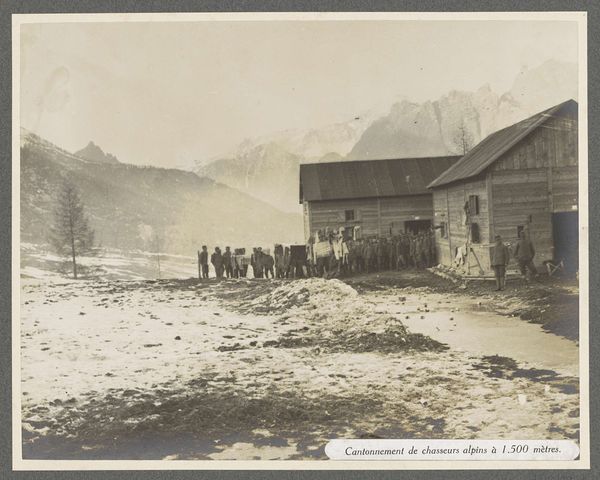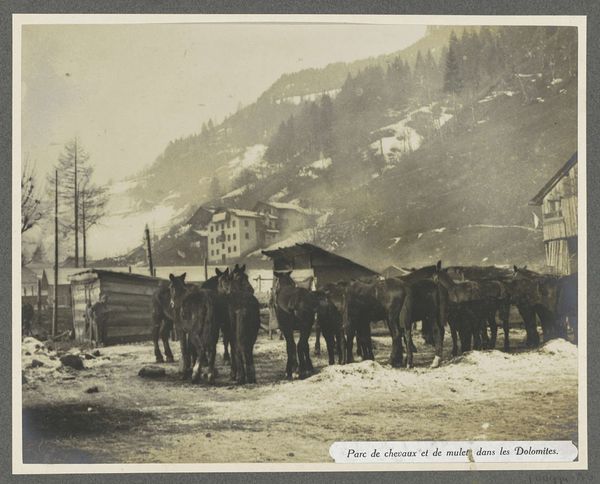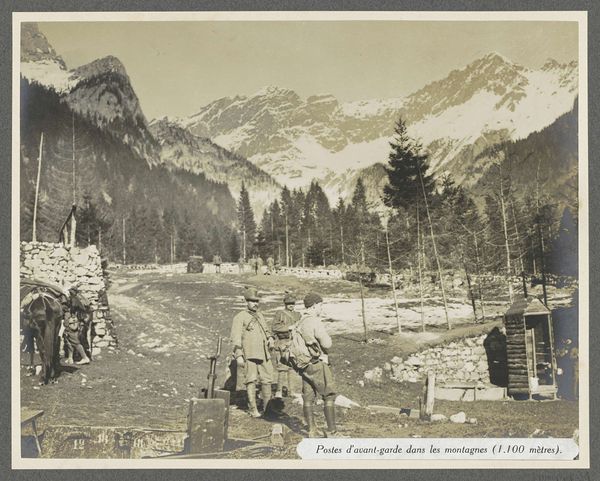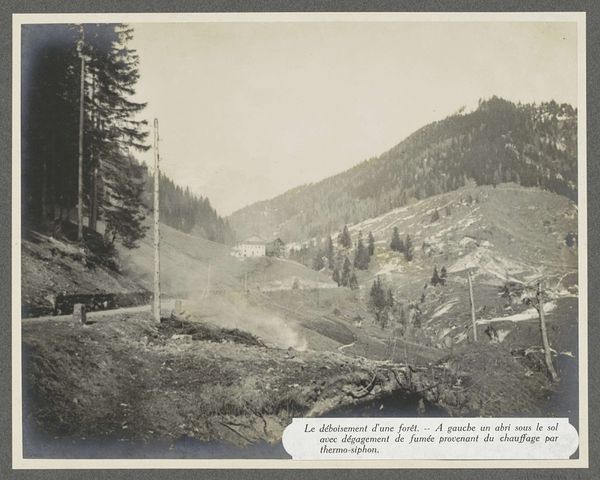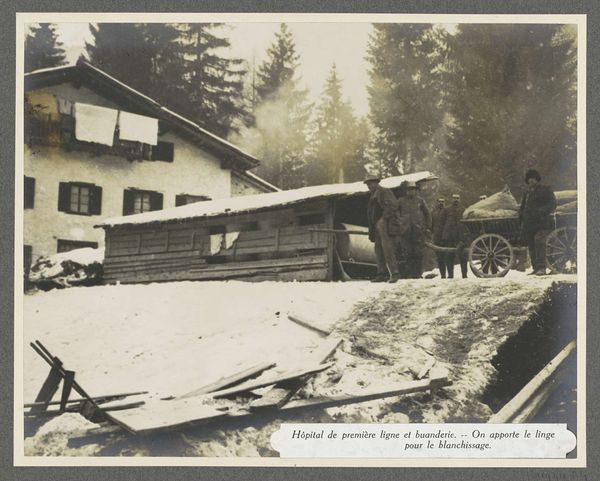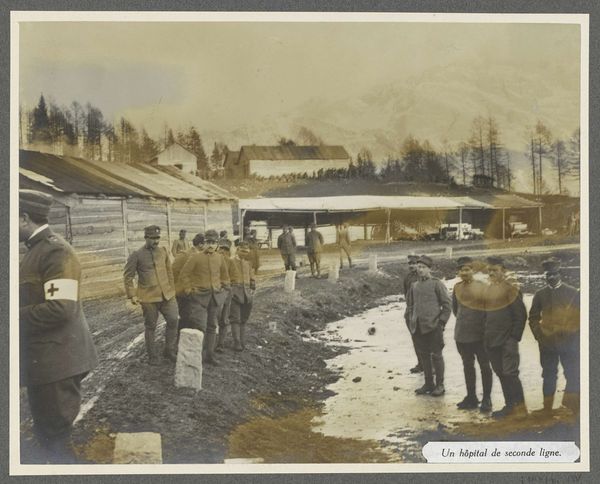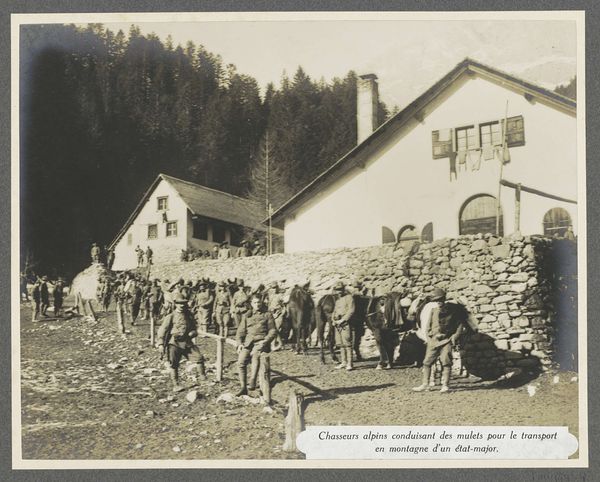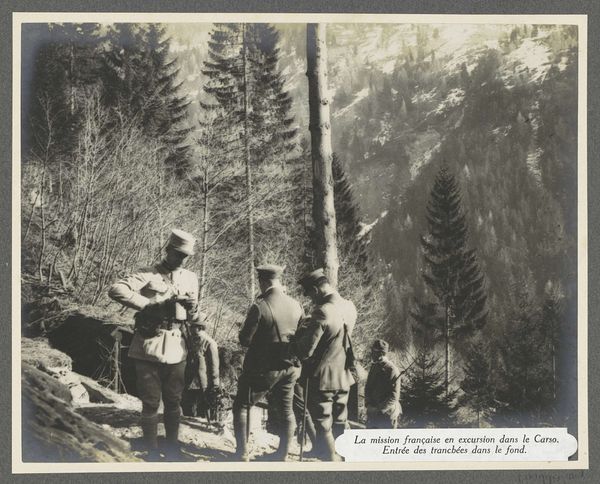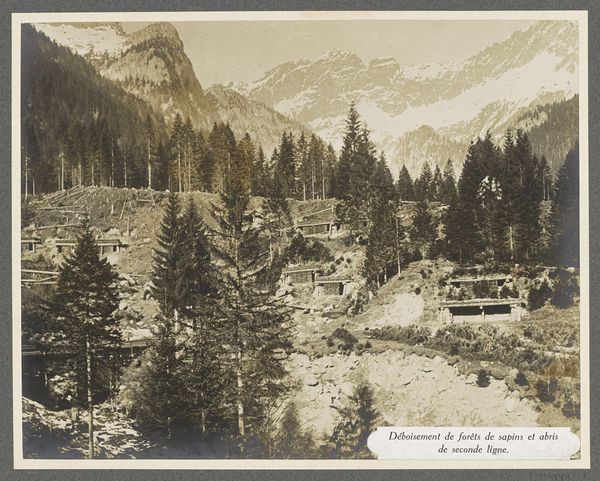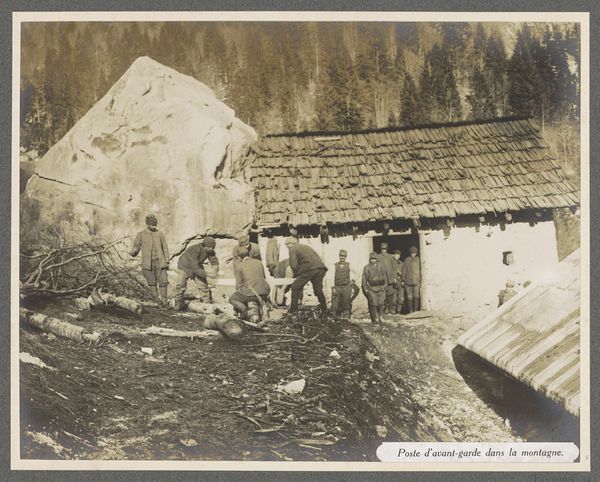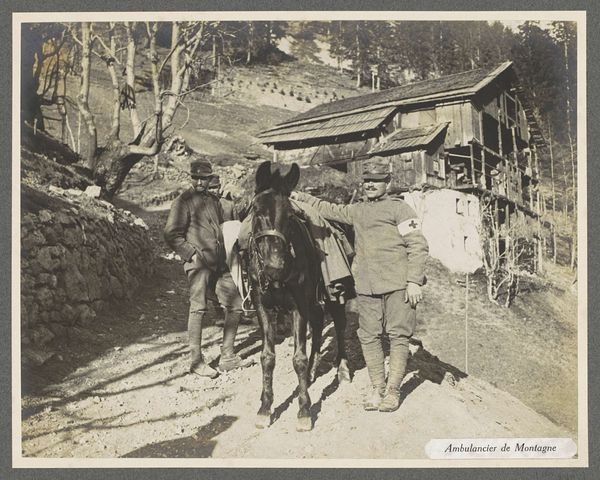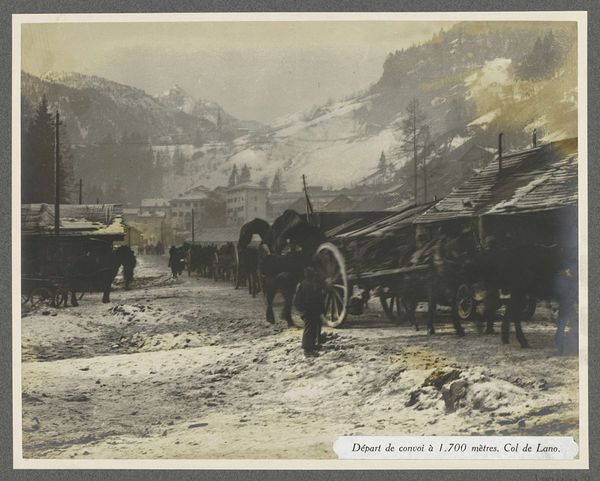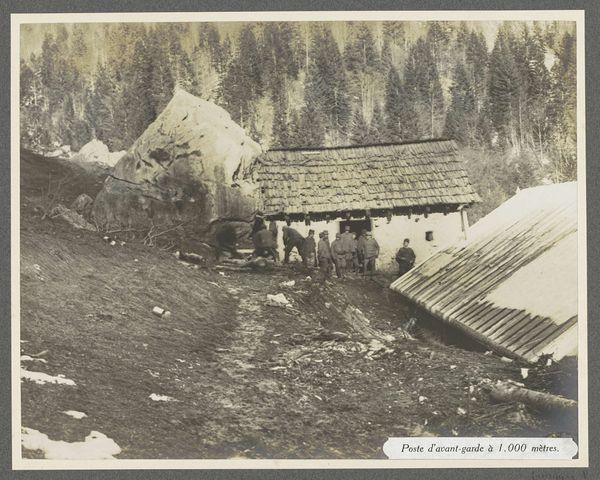
photography, gelatin-silver-print
#
art-nouveau
#
landscape
#
photography
#
horse
#
gelatin-silver-print
#
history-painting
#
realism
Dimensions: height 220 mm, width 280 mm
Copyright: Rijks Museum: Open Domain
Editor: We’re looking at a photograph from 1916 called “Militairen op straat in het gebombardeerd dorp Andraz,” which translates to “Military on the street in the bombarded village of Andraz.” It's a gelatin silver print and it feels…stark. There's a group of soldiers with horses, and what looks like a seriously damaged village. What story do you see being told here? Curator: Well, let's consider the historical context. 1916. World War I. The presence of soldiers, the damaged village…this isn’t just a landscape. It’s a deliberate visual record. What strikes me is the relatively calm posture of the soldiers. It is as if they are parading for the camera. What do you make of the text in the picture itself? Editor: The text says, “On the road of the Dolomites. A bombarded village and a church. To the right, a cemetery where Italian soldiers are buried.” It’s adding layers of meaning, definitely emphasizing the devastation of war. Curator: Exactly! And notice the composition. The image shows the way in which institutions such as the army are claiming ground in the space of loss, monumentalizing and memorializing sites as military and state property. Now, how might this image function within a larger narrative of the war effort, do you think? Editor: Perhaps to elicit a sense of somber duty in civilians. The destruction is right there, but the soldiers are calm, collected…ready to defend. It becomes propaganda. Curator: Precisely. By circulating this image through news outlets, perhaps, governments aimed to portray not just devastation, but also control. To inspire and justify its military actions to the public. So this image shows not only military strategy, but institutional use of photographs for manipulation and propaganda. Editor: It’s eye-opening how the cultural and political elements really shape the image's power. Thanks for bringing that to light. Curator: My pleasure. Analyzing art in relation to cultural shifts broadens our perspective immensely. It really becomes a lens for history.
Comments
No comments
Be the first to comment and join the conversation on the ultimate creative platform.
